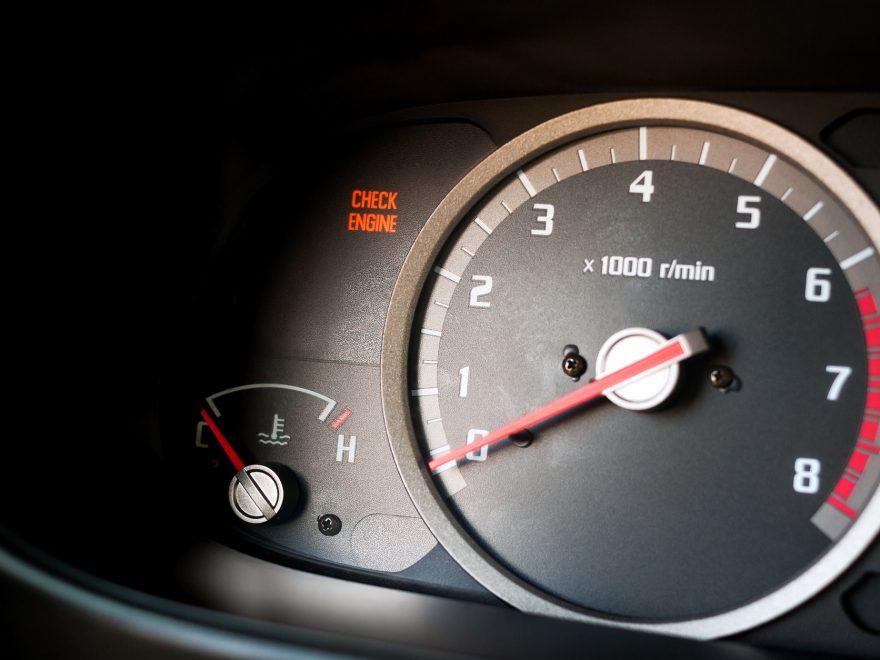“No…not the check engine light!”
Many people ignore the check engine light when it comes on in their vehicle. They hope it will go away on its own.
More likely, whatever problem it is signaling will continue to get worse. It could even cause more serious (and expensive) damage to your vehicle.
But many of the common reasons that the light comes on aren’t expensive or difficult to fix. Let’s look at 5 common ones so you can see for yourself.
A Loose Gas Cap
When the light comes on you should always check the rest of your gauges first. This will help you determine if there is an immediate and serious problem.
The next step is to check your gas cap. A loose gas cap can cause the light to come on. Tighten it up and you’re good to go. Keep in mind that it may take a few trips to reset the light.
Dirty or Burned out Oxygen Sensor
Another common problem is that one of the oxygen sensors is dirty or has failed. The purpose of this sensor is to monitor the exhaust for unburned oxygen. This helps keep your gas mileage down.
Over time, these sensors get dirty and start sending faulty information. This means that the needed adjustments aren’t made. Your gas mileage will drop, and if you don’t replace that sensor, you could eventually blow out the catalytic converter.
Worn Out Spark Plugs or Wires
You should replace your spark plugs every once in a while anyway. Older cars need new ones roughly every 25,000-30,000 miles. On a newer car, you can get away with changing them every 100,000 miles.
Replacing spark plugs is an easy and inexpensive fix. Most people can even do it themselves. Your engine will run a lot better and you’ll be happy you replaced them.
Failing Mass Air Flow Sensor
Another sensor that the light may be indicating is going bad is the mass air flow sensor. This sensor tells your engine how much air is coming through to the engine. The engine uses this information to supply the proper amount of fuel.
With faulty information, the car can stall or decrease gas mileage. It can also increase the vehicle’s emissions.
The easiest way to keep this sensor from failing is to replace your air filter once a year.
Catalytic Converter
Every cause that we’ve mentioned so far is an easy, inexpensive fix. The catalytic converter is not so inexpensive. It can cost up to $2000 for parts and labor!
The thing about catalytic converters is that they often won’t fail if you’re keeping up with proper maintenance. For example, a faulty oxygen sensor or spark plugs can cause damage to the catalytic converter.
So don’t ignore your check engine light and you probably won’t end up with this repair bill.
Check your Check Engine Light!
See? Just because your check engine light comes on, doesn’t mean you need an engine rebuild. Many issues that cause your check engine light to come on aren’t big issues at all. But the cost of ignoring the warning can be quite high. So it makes more sense to check it out right away.
For more fantastic car repair tips, be sure to check out our auto repair help section.

